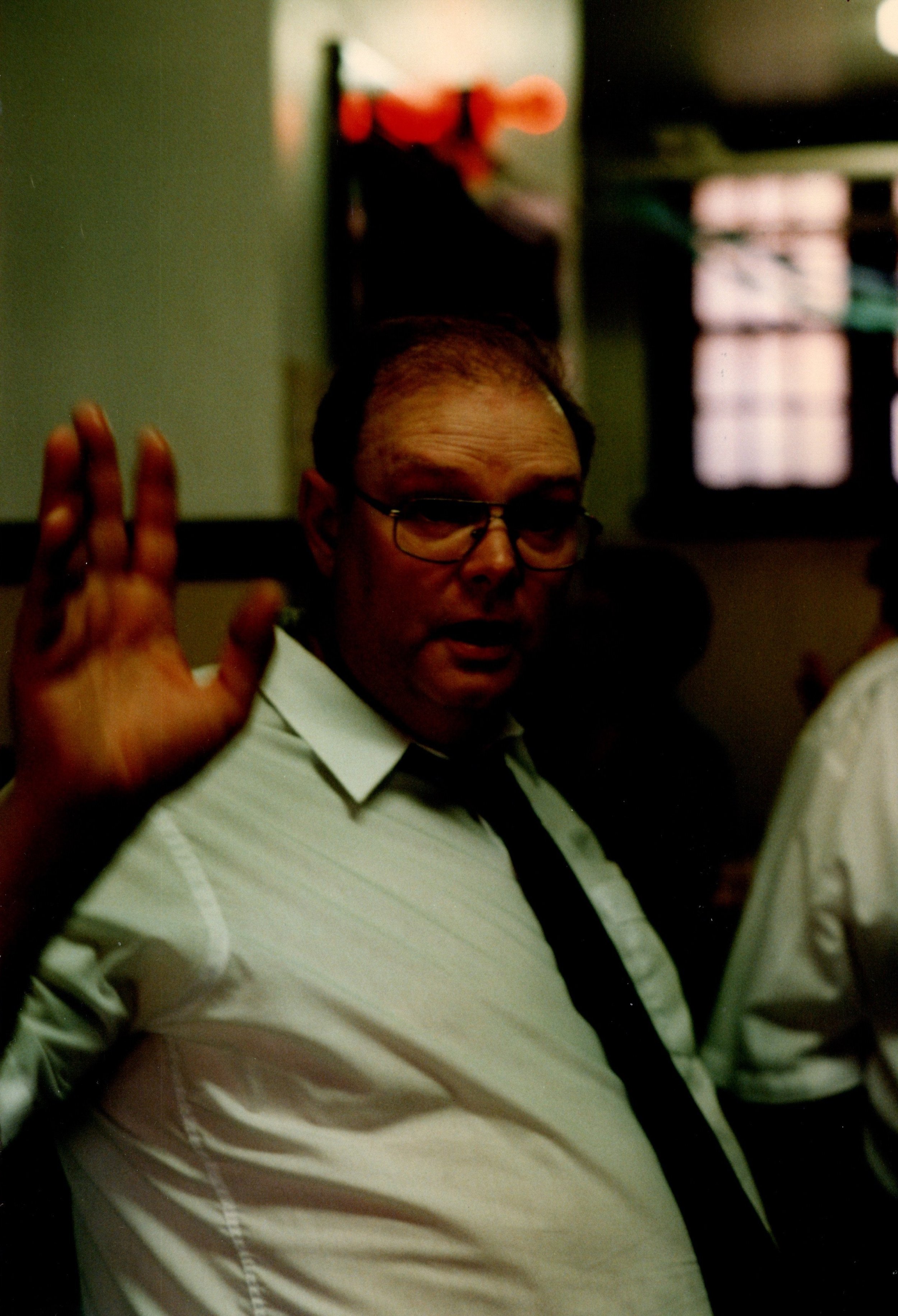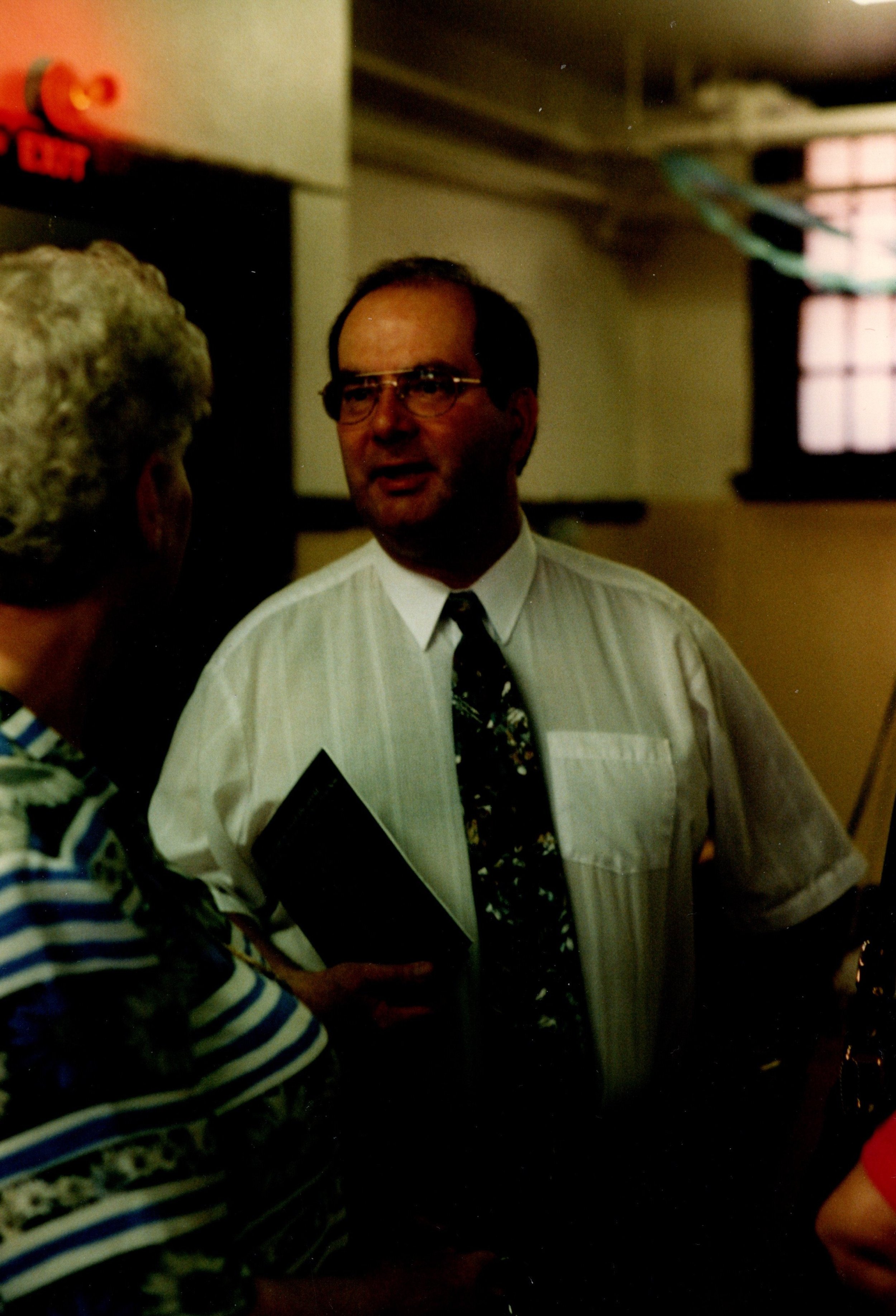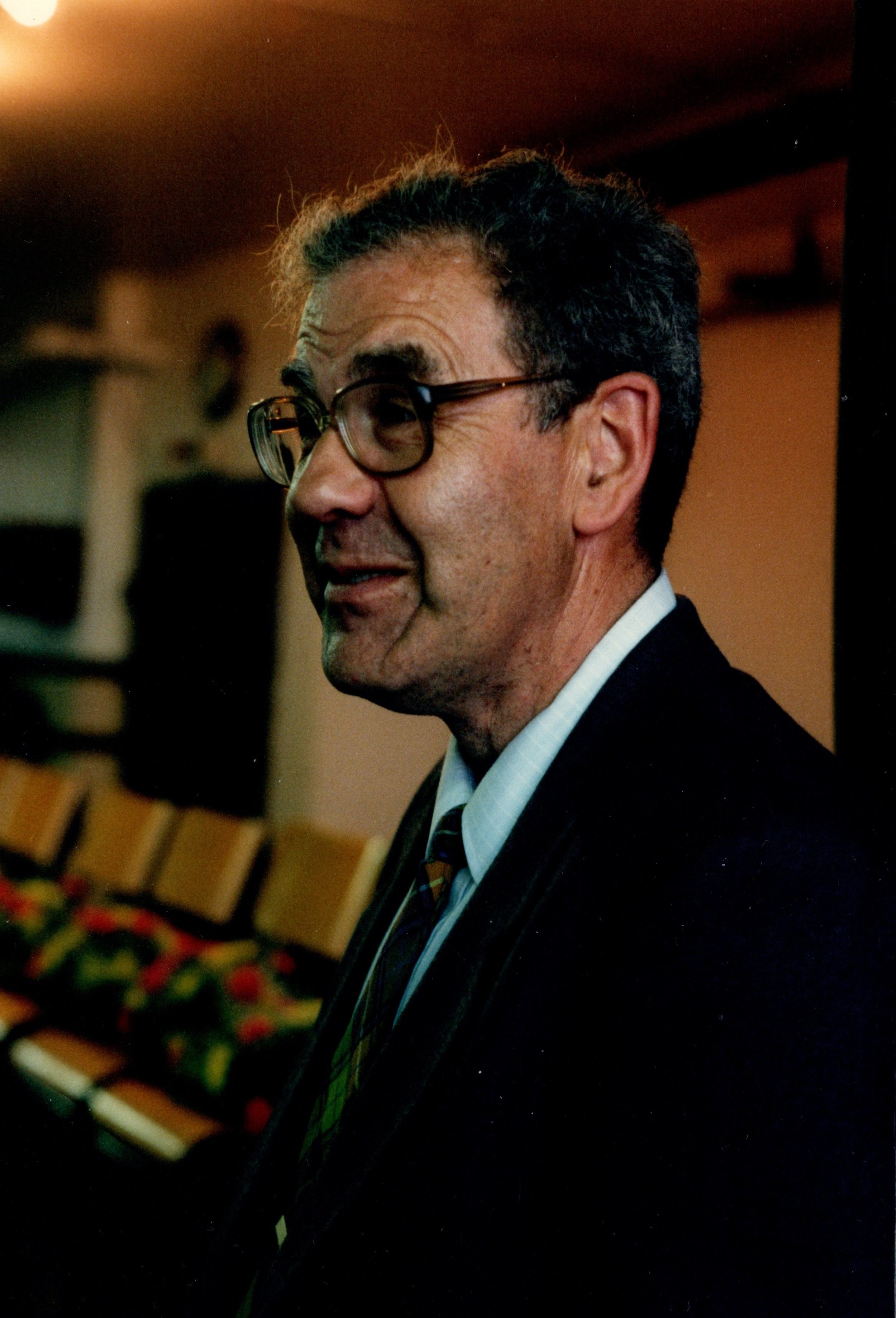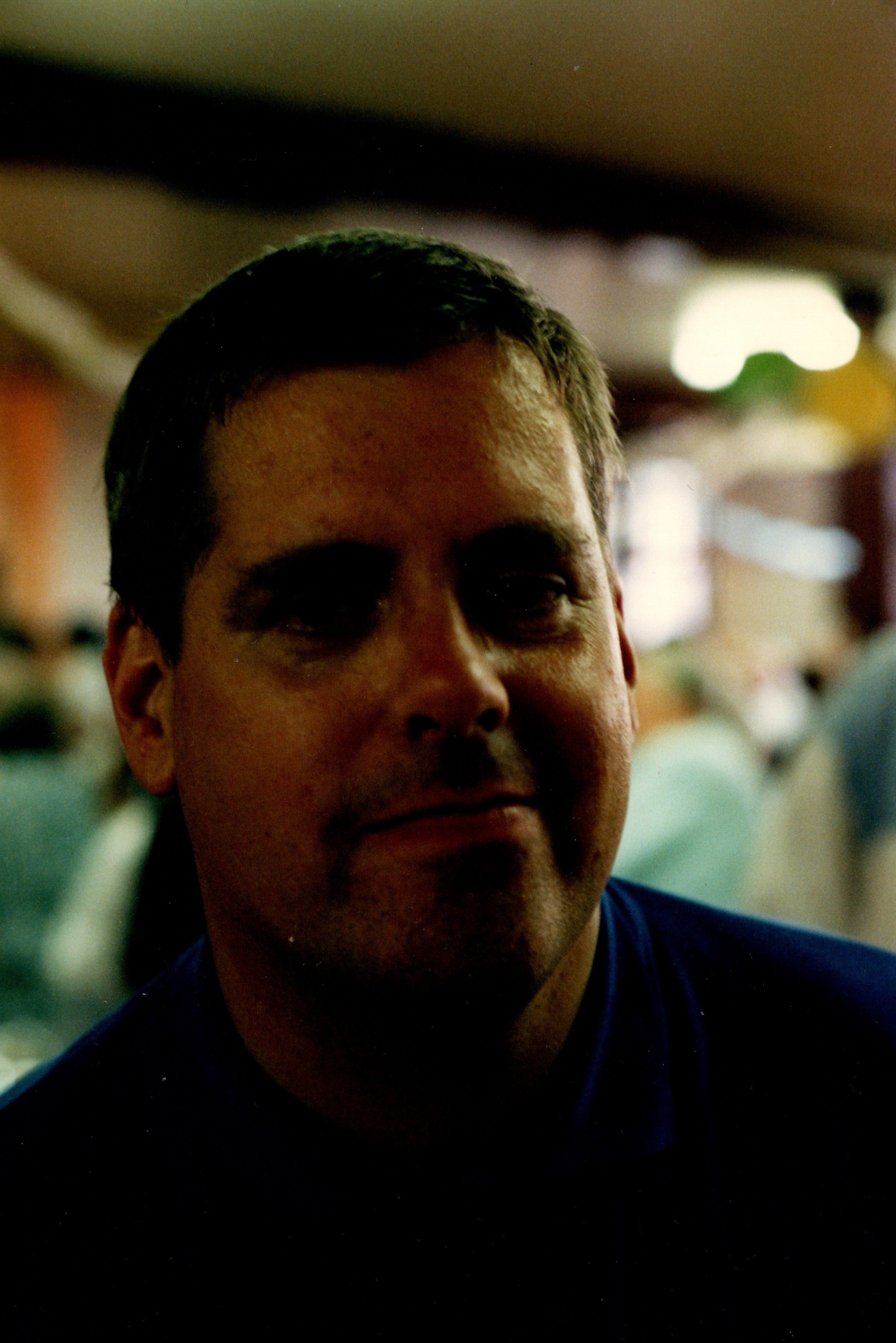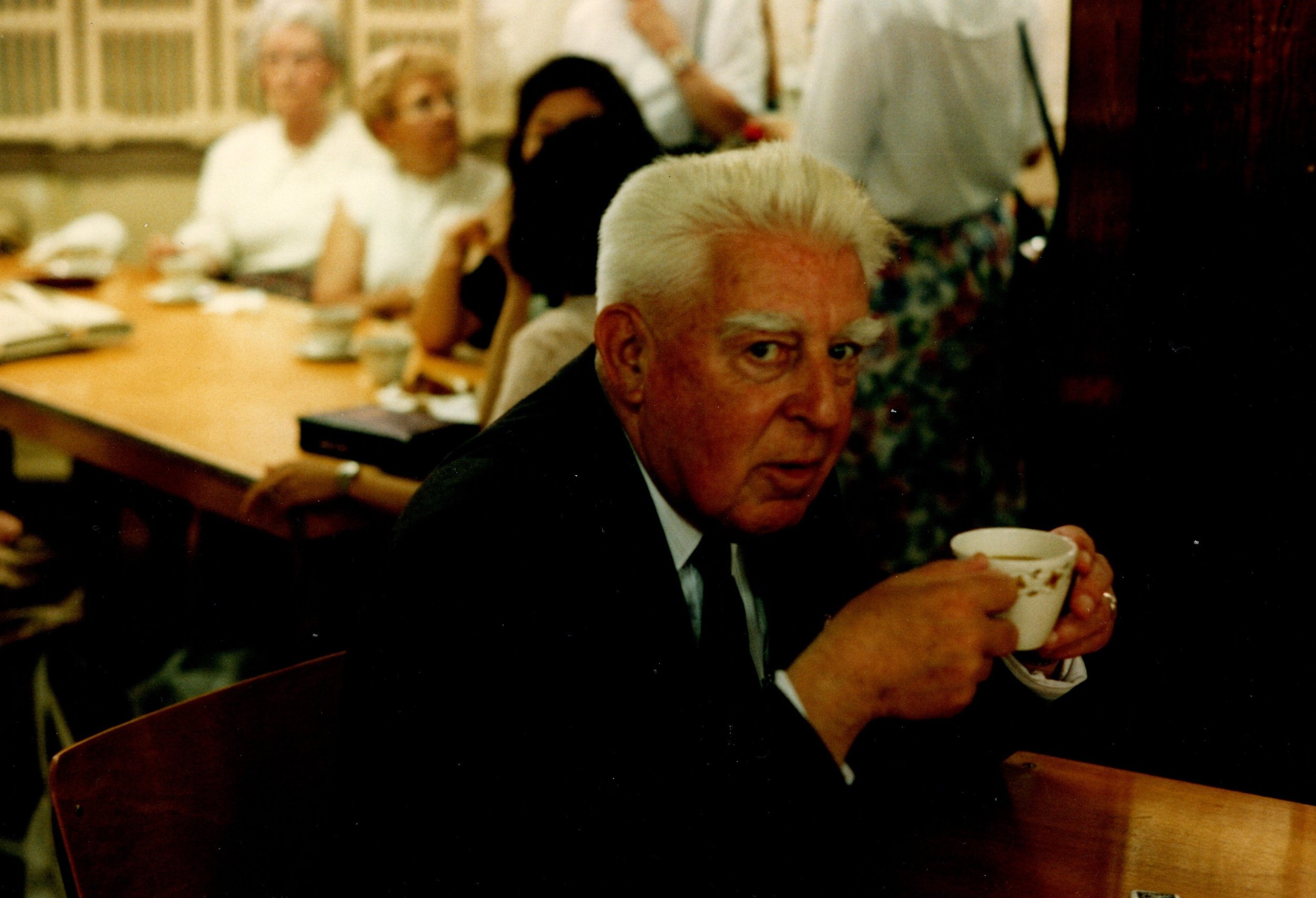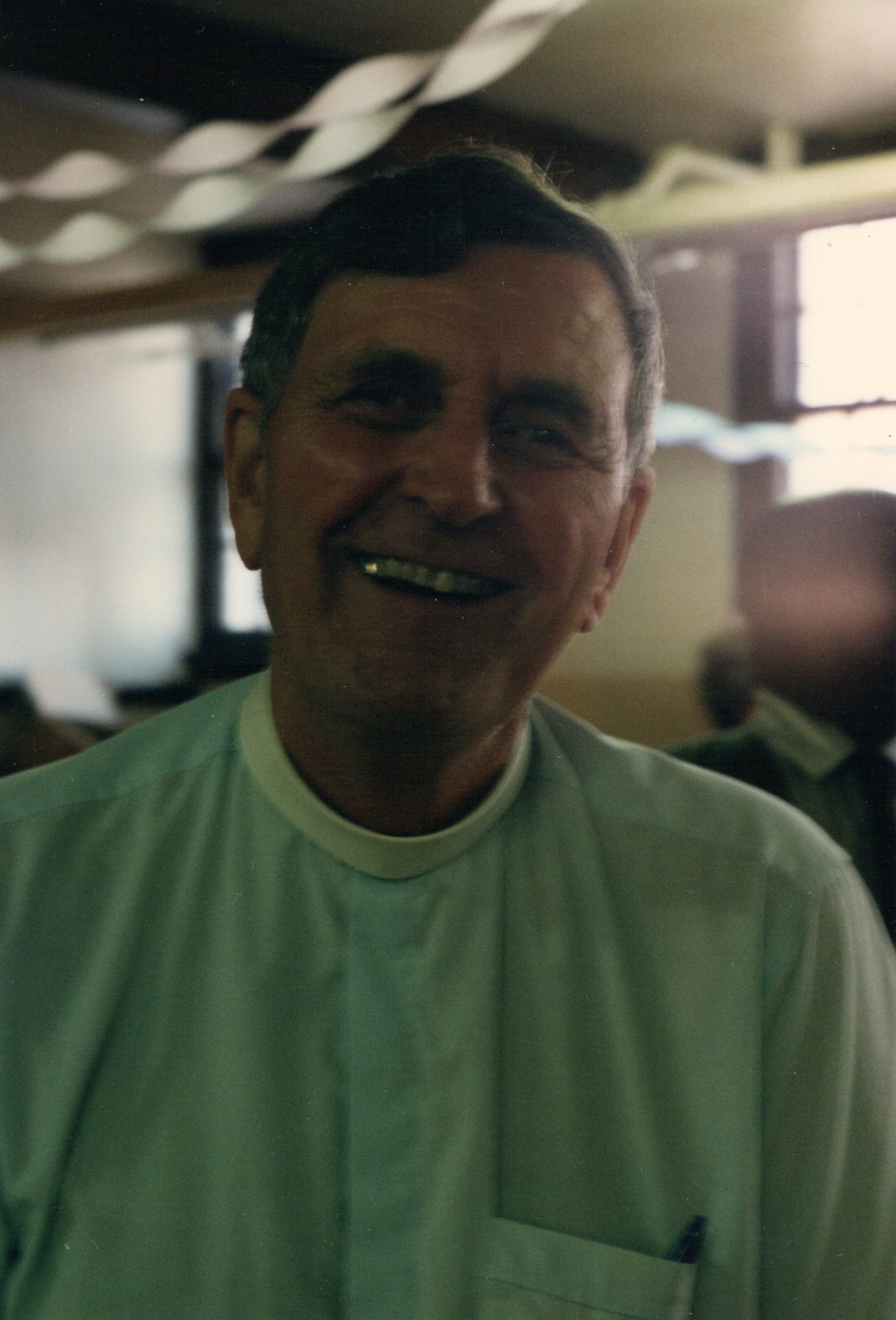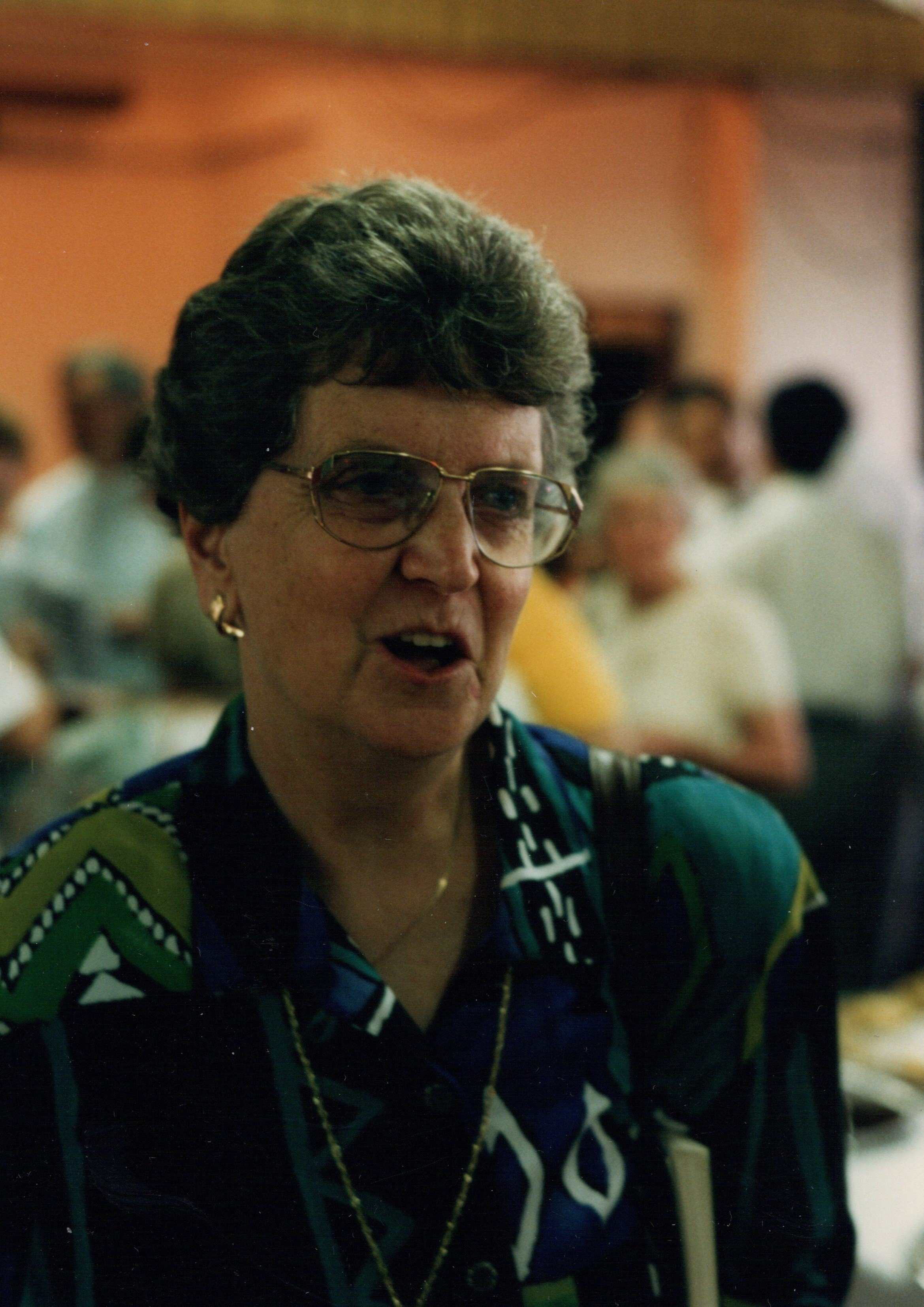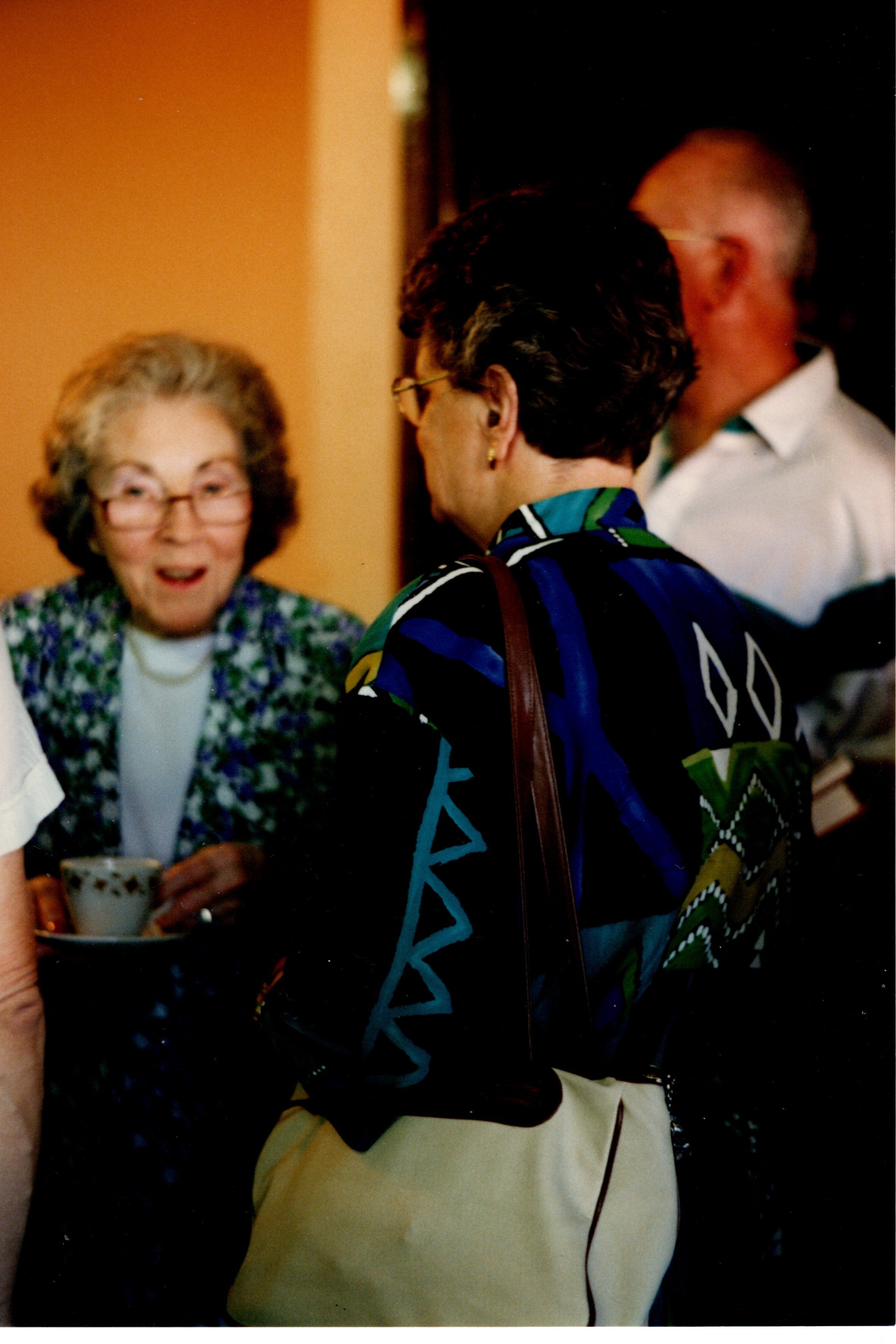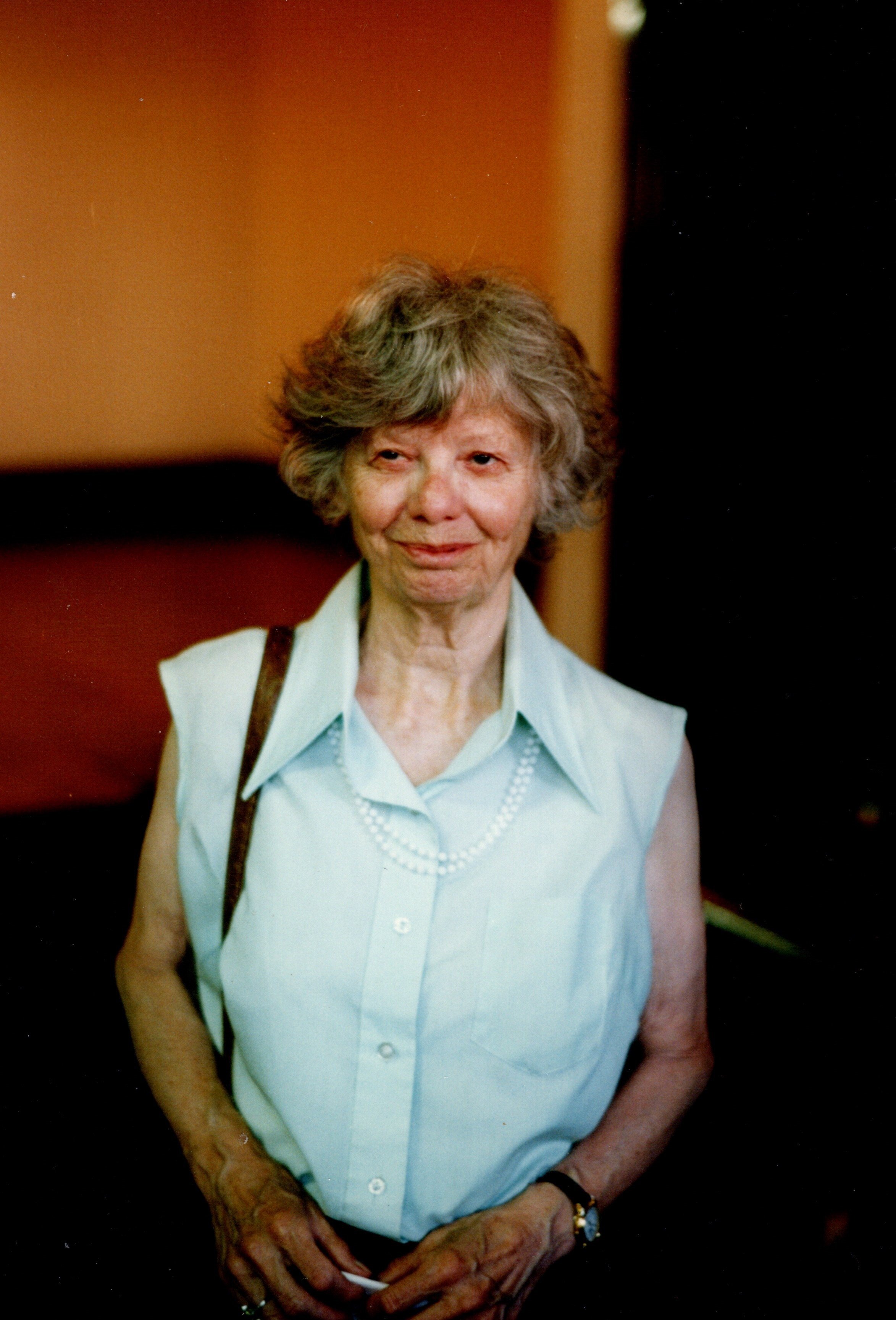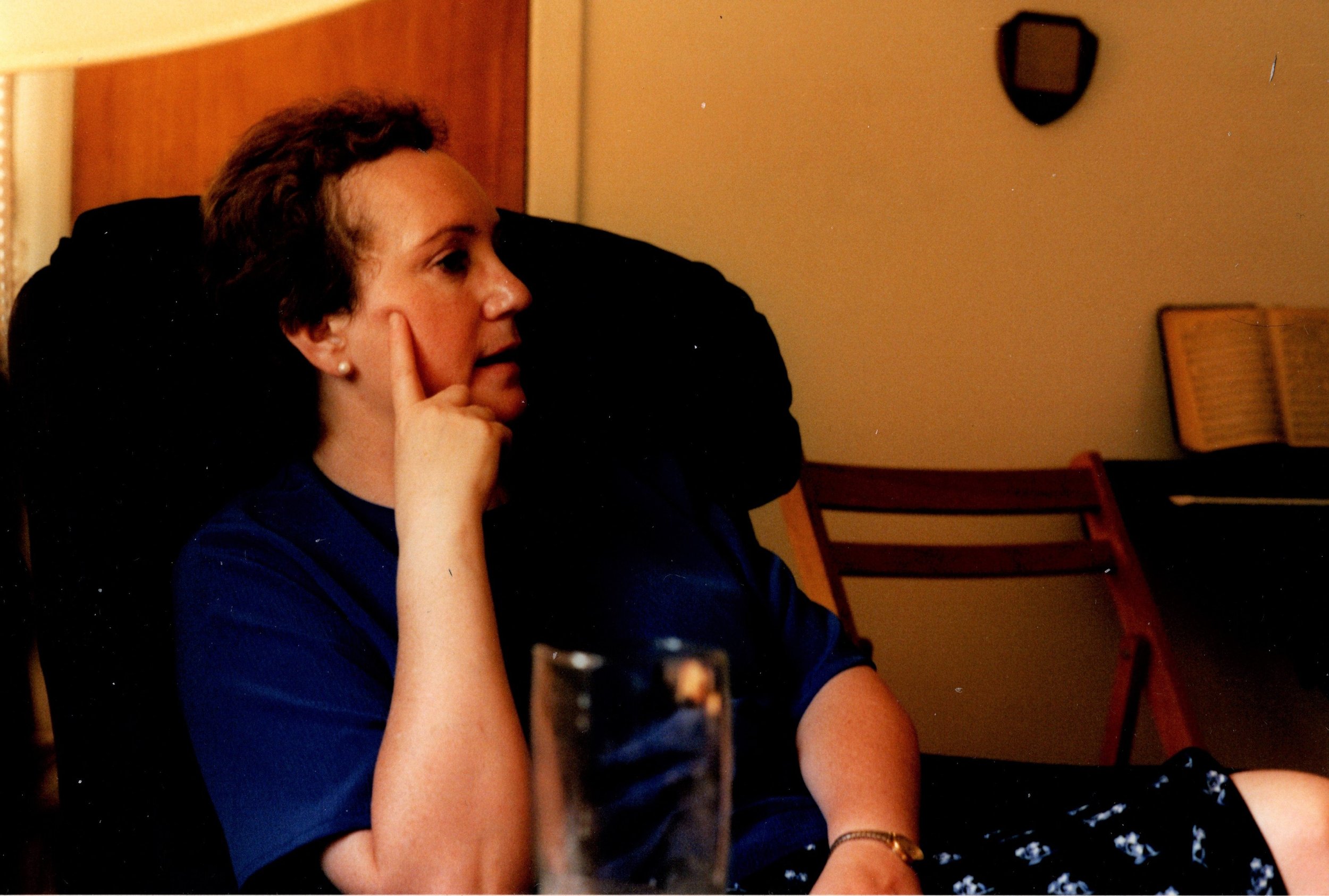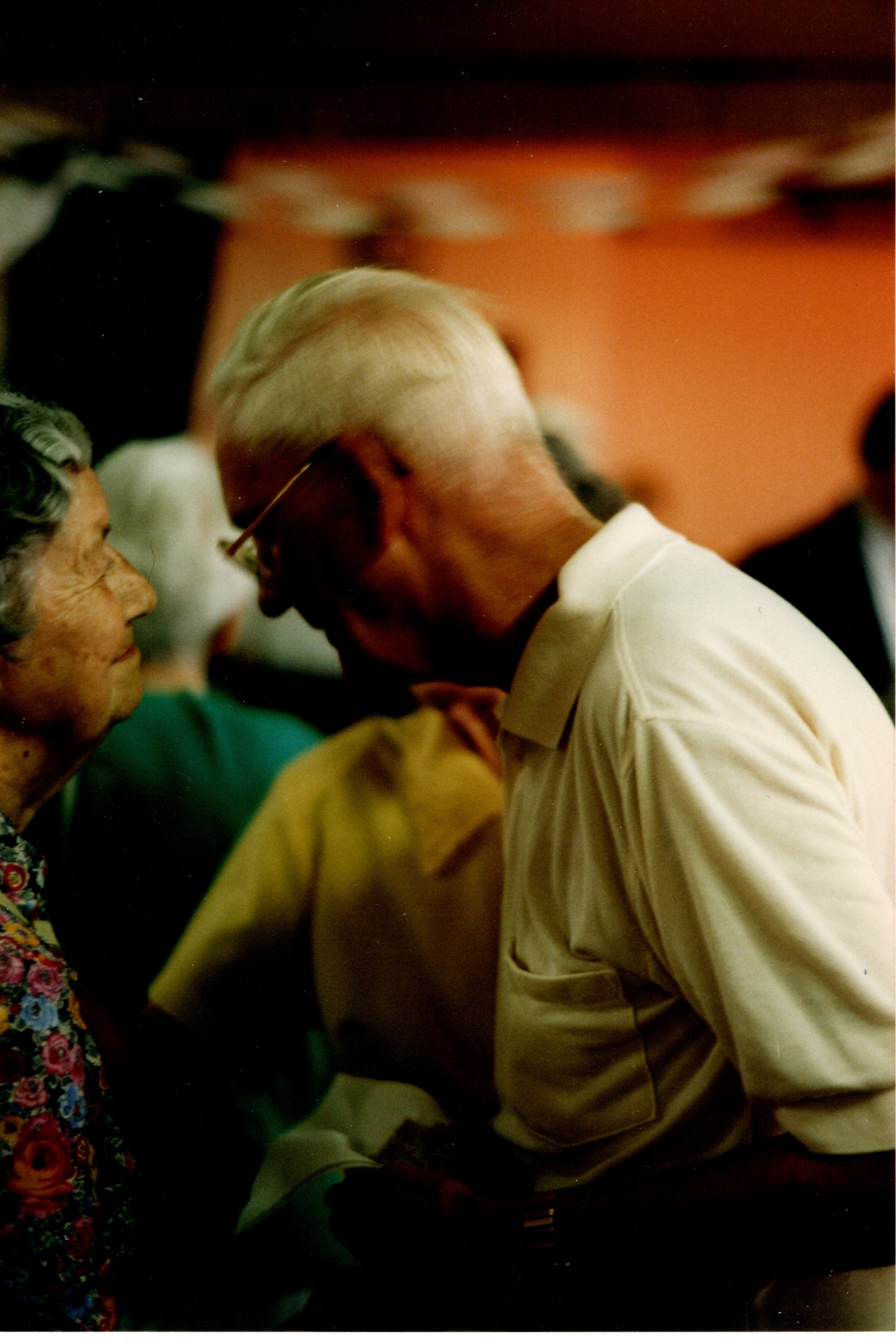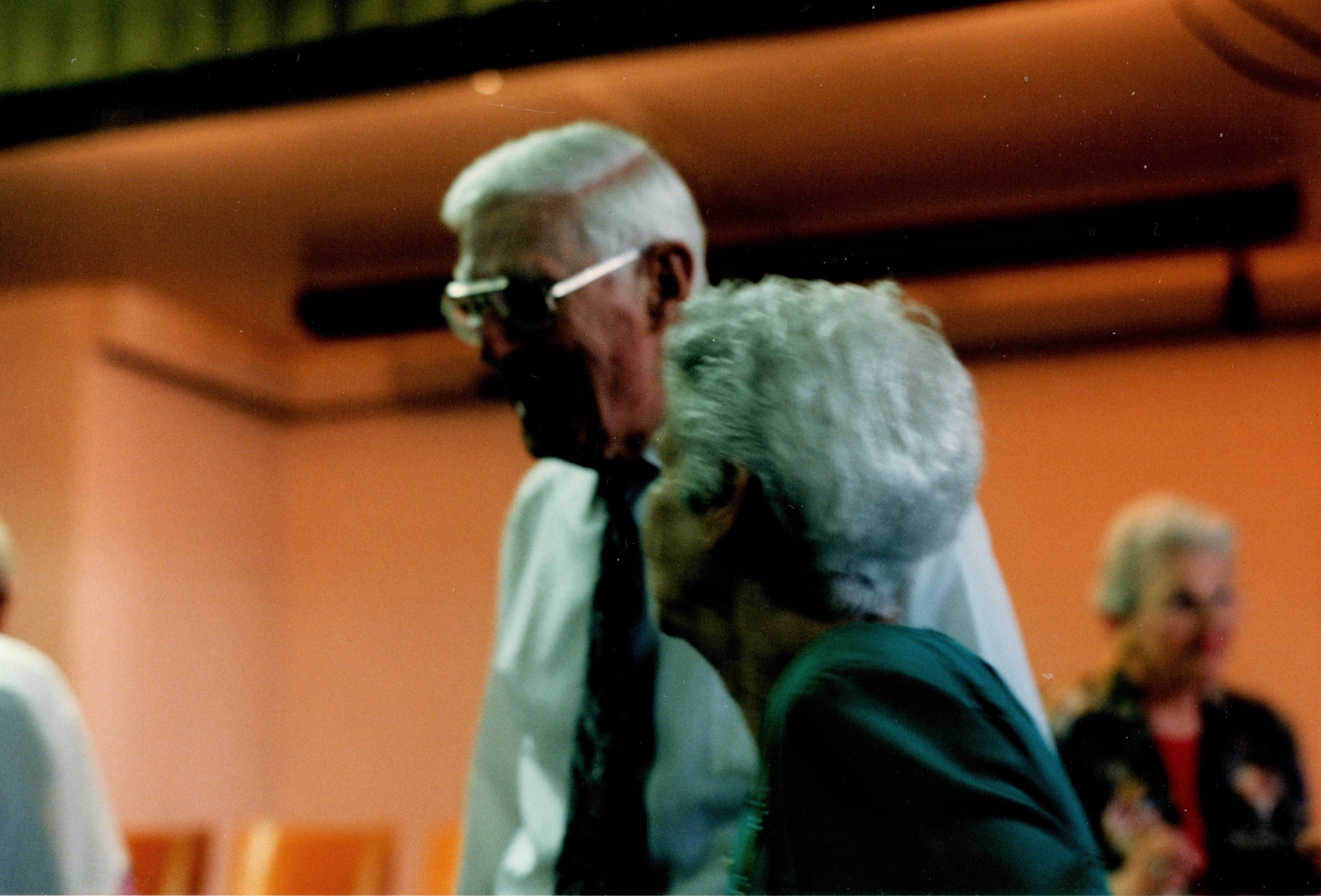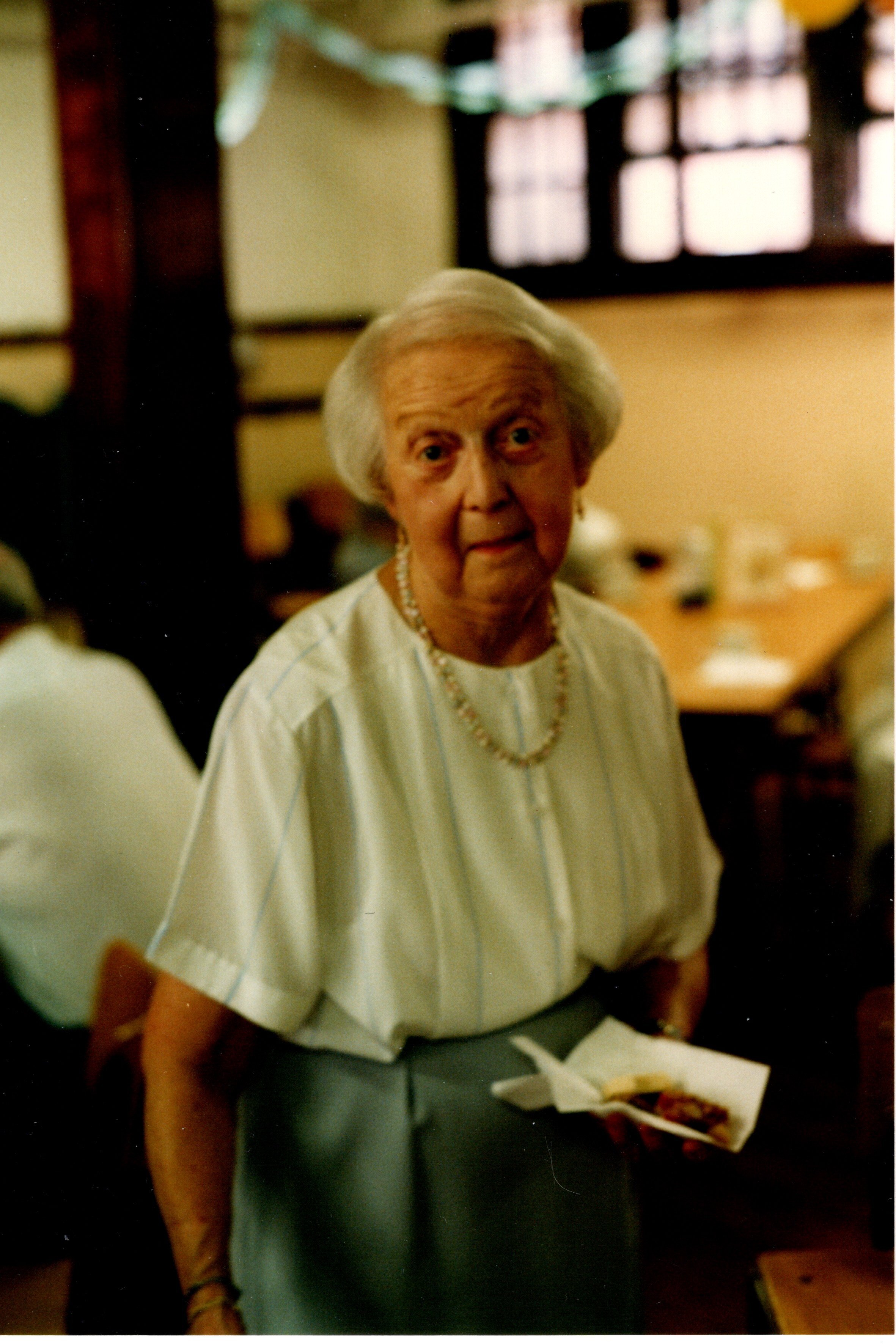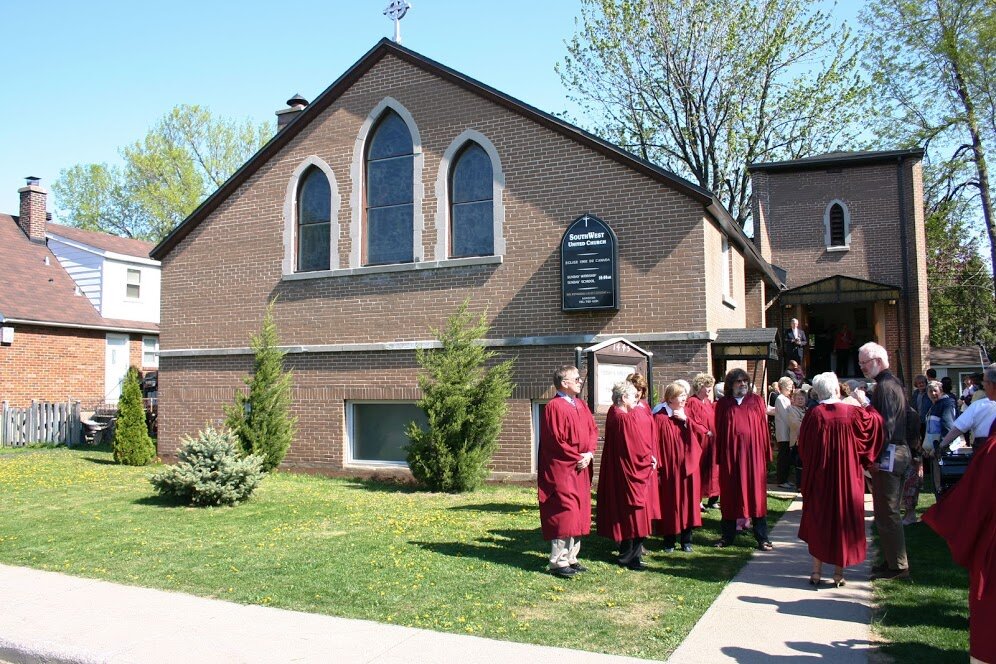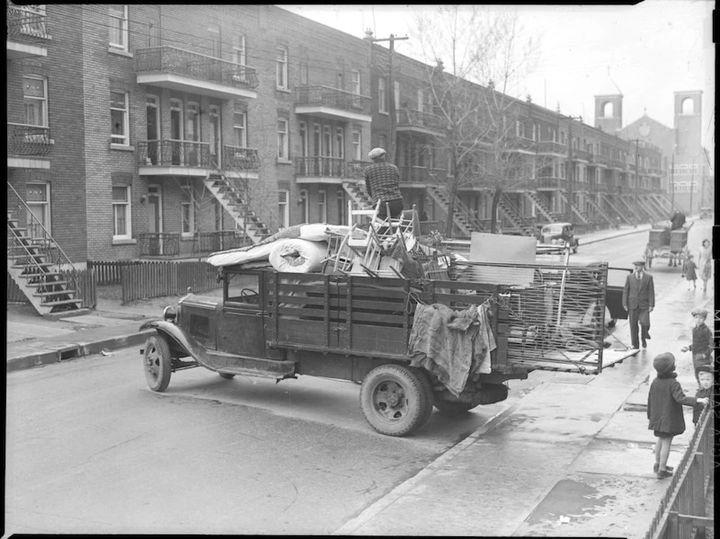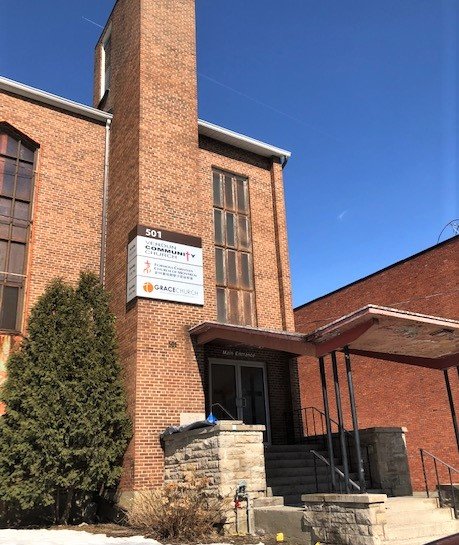
BLOG ..BLOGUE
News from SouthWest ..Des nouvelles du Sud-Ouest
Where Else Could Sabbath be so Sweet?
As explained in an earlier newsletter, we are no longer able, as a congregation, to keep up with the bills, and the church property, including the manse, will be going on the market very soon.
It is a sad state of affairs for sure, but our best shot at staying together as a congregation lies in selling the property.
Many of you have gone through this before, some more than once. But you did get through it, and I hope you feel that you found a new home in SouthWest United, wherever you came from before. It is always sad to leave a church, but we must try to remember that a church is not the bricks and mortar; a church is the people who pray and sing and laugh and cry together.
Some may feel like turning away at this time. Not wanting to witness another church closing, the instinct may be to remove ourselves now, try to spare ourselves the pain. Instead, I hope each of us will ask ourselves what we get from being part of SouthWest United, what are the essential parts of the experience, and also, what might be let go? Because the one thing we know for sure is that we can’t continue on exactly as we are now, but if we can identify for ourselves what we get, and what we need from our church, that will make it easier to find those things again.
The pandemic showed us that a church community can exist even when in-person worship is not possible; but I think most of us would agree that meeting together in a space is an important part of our church life. So let’s assume we need to meet in a space: what kind of space? Is it important that it be a traditional church, with pews, stained glass and a high arched ceiling? Could we worship in a plainer setting and still feel close to God and our community?
And then there’s time. We are accustomed to meeting on Sunday mornings. At 10:00 to be precise, although many of us have worshipped at different times in the past. How much would our church experience be harmed by meeting at a different time, say in the afternoon? Or even on a different day of the week? I know it sounds radical but if God is wherever two or three are gathered, then surely that gathering can take place any day of the week, any time.
Do you ever look around your home and feel bogged down by stuff? A church can feel that way too. I love the sense of history in our church building, but I also know nobody gets through the eye of the needle with 20 centrepieces, 10 boxes of sheet music and a bunch of seat cushions in tow! Even if we weren’t selling, the church is in need of a good de-cluttering!
In the musical Fiddler on the Roof, the villagers of Anatevka are forced to leave to escape the murderous pogroms. It’s a situation far more dire than ours, and one that mirrors the current displacement of Ukrainians and many other peoples all over the globe. Walking single file, carrying bags over their shoulders, pushing wooden carts, the villagers sing:
A little bit of this,
A little bit of that.
A pot
A pan
A broom
A hat.
A bench
A tree
So what’s a stove? Or a house?
A stick of wood, a piece of cloth.
What do we leave? Nothing much
Only Anatevka.
Church is supposed to be the place we feel the closest to Creator, to Spirit. Maybe our attachment to objects – even beautiful ones like stained-glass windows and a wooden pipe organ – can get in the way. Don’t get me wrong, I’m as attached to those things as the next person, and maybe we will find a way to keep them in our lives. But even more importantly, we need to stick together.
The villagers in Fiddler on the Roof go on to sing:
Anatevka, Anatevka
Underfed, overworked Anatevka
Where else could Sabbath be so sweet?
Anatevka, Anatevka
Intimate, obstinate, Anatevka
Where I know everyone I meet…
Soon I’ll be a stranger in a strange new place.
Searching for an old familiar face…
This is worse than leaving stuff, even leaving a home: it is the loss of Community. We are lucky; we don’t need to let that happen to us.
We will need to be brave, and to accept that nothing stays the same, that change is a part of life, and that We are the Church.
The friendships that have been formed over the years, the hymns sung together innumerable times, the baptisms and funerals, the memories of good times and bad: this is the church. So let’s get ready to pick up what is essential and carry it forward, together.
Amy
Verdun and its Vets
I got on my bike this week for the first time in 2022, and was riding on the bike path near the waterfront when I spotted this. As you probably know, the stone house located near Lloyd-George at Lasalle Blvd is a local museum called the Maison Nivard de St-Dizier that has just reopened for the season. This outdoor exhibit features photos of life in Verdun during wartime, as well as the shot below of the stone house when it was the Crawford Park Legion.
I was reminded that the museum had created an online exhibit (bilingual!) called Verdun in Wartime: An Engaged Community. It is available to peruse here.
Here’s my translation of the text next to the photo:
A HISTORIC HOUSE FOR VETERANS
This is a photo of the Maison Nivard de St-Dizier in 1979 when it was occupied by Royal Canadian Legion Branch 202 Crawford Park. Starting in 1953, the old stone house became the official meeting place for Crawford Park veterans and an important pillar of community life in the neighbourhood. Most of the parties that were organized there were open to all.
Rocks, Trees, Skies, Seas
If you attended the May 22nd service, you heard Sarah introduce a character with the extraordinary name of Maltbie Davenport Babcock.
For those who missed it, Babcock was a noted minister and author of the 19th century. Born in 1858 in Syracuse, New York, he received his degree in theology in 1882. He was described by contemporaries as having "an unusually brilliant intellect and stirring oratorical powers that commanded admiration, [and] won for him a foremost place among the favorites of his denomination".
While pastoring at Brown Memorial Presbyterian Church in Baltimore, Maryland, he was acclaimed for his oratory and use of colorful metaphors in his sermons. He also led a fund-raising effort to assist Jewish refugees from Russia who were victims of an anti-Jewish pogrom in the 1880s. Babcock was honored by a Doctor of Divinity degree from Syracuse University in 1896. (Source: Wikipedia)
Throughout his life, Babcock would go out for walks in nature, telling his wife he was "going out to see the Father's world" – and now we come to the reason his name came up during the SouthWest service. Babcock wrote several poems and hymns, which were only published after his death. The most well-known is titled, This is My Father’s World.
In the present day United church, we know it under a slightly different title, This is God’s Wondrous World. Otherwise, the words, full of images of the natural world, are the same. Sarah submitted that there was nothing wrong with the original first line and proceeded to lead the choir and congregation in singing them as Maltbie Davenport Babcock intended!
This is my Father’s world, and to my listening ears
All nature sings, and round me rings
The music of the spheres.
This is my Father’s world; I rest me in the thought
Of rocks and trees, of skies and seas
His hand the wonders wrought.
This is my Father’s world; The birds their carols raise;
The morning light, the lily white,
Declare their Maker’s praise.
This is my Father’s world; He shines in all that’s fair;
In the rustling grass I hear Him pass,
He speaks to me everywhere.
This is my Father’s world; O let me ne’er forget
That though the wrong seems oft so strong,
God is the ruler yet.
This is my Father's world: why should my heart be sad?
The Lord is King; let the heavens ring!
God reigns; let the earth be glad!
Incidentally, these original lyrics appear in the old Crawford Park hymnary which we mentioned two weeks ago.
Maltbie Davenport Babcock died in Naples in 1901 at only 42 years of age. He was returning from the Holy Land where it seems he had contracted a bacterial infection.
Last Church Standing
Pastor Beryl will be officiating at a wedding this Saturday, but this is her week “off” and the Sunday service will be lay-led. Instead of her usual word in the newsletter, I am sharing the text composed for our Mission Support grant. It lays out SouthWest’s current situation in a pretty stark way.
Our Mission statement was crafted some years ago when we still had SouthWest Mission. I believe the sense of community it talks about it still alive and well at SouthWest United; what we lack is resources.
The grant application asks that we provide the following:
-the context in which your ministry is situated
-why you are applying for a grant
- how long you anticipate needing such a grant
- a financial plan for decreasing the grant
- effect on the ministry if request is not granted
- if your application is successful, how your organization will recognize the financial support provided by The United Church of Canada within your organization and the broader community
I hope, in reading the text below, you will find that we have addressed all of these points.
-Amy
Mission statement:
At SouthWest, our sense of community is inspired by our Christian faith. We partner with individuals and organizations to address issues like food security, poverty, education and wellness. Our programs and activities encourage and inspire all of us to realize our potential as uniquely gifted individuals in our families and neighbourhoods.
Our Context
SouthWest United Church is the last remaining English United Church in Verdun. The only other UCC congregation located in the borough is the Montreal Korean United Church. As we are located at the western edge of Verdun, a portion of our membership has always come from LaSalle, another community with no remaining United Church. There are no United Churches left in all of the South-west borough either, apart from Centenary United, a congregation which no longer has a building of its own.
In 2007, when Crawford Park United and Verdun United churches amalgamated to create SouthWest Pastoral Charge, the VUC church was sold and we were able to invest a tidy sum. It is due to having that principal to draw on that SouthWest United has been able to continue its ministry into 2022. Even in the first year, SouthWest never raised enough in offerings to cover salaries and upkeep of the building.
For twelve years (2007-2019) we had our office in, and ran SouthWest Mission out of, Verdun Elementary School. We were instrumental in starting the Breakfast Club program which continues to this day and which we still support. The Mission also established a clothing room where students could find whatever they needed, from a pair of socks to a clean shirt to snowpants or boots. Over the years, the Mission’s services expanded to provide meals and food programs to the entire community, and became a gathering place for many groups. We received occasional grants from the United Church and other sources to help run these programs, but the existence of the Mission always depended on funding from the church.
By 2018 the writing was on the wall and we were looking at various cost-cutting measures. The 3 possibilites as we saw it were: to cut salaries, to close the Mission, and to sell the church property. We realized at the time that all three would be necessary eventually. In 2019, we cut our full-time minister (David Lefneski) to half time. As a result, he had little time to devote to the Mission; soon afterward the decision was taken to close the Mission, which was costing us $1100 a month in rent alone. Our office was moved into the SouthWest church building at 1445 Clemenceau. We also had a change of leadership at that time, going from a part-time Ordained Minister to a part-time Designated Lay Minister. This was more of a happy accident than a cost-saving move, as Pastor Beryl Barraclough was our first choice anyway when Rev. David left.
In the fall of 2019, even with reduced energy and resources, our congregation was enthusiastic about starting new projects: a Sunday school, bingo, a concert series… but then of course Covid happened. For the two years - and counting - of the pandemic, we have managed to continue worshipping, whether in person or online, but our ability to reach out into the community has been severely limited. Covid prevented us from holding an Annual Congregational meeting in 2020 or 2021 (our core people are elderly and many would have been incapable of attending an online meeting). Various federal programs helped us in 2020 and 2021, but we were still obliged to draw on our investments in those two years. Had we been able to meet two years ago, we would probably have held a vote then on selling the property. As it is, we voted on May 1st at our first congregational meeting in three years, and the following motion was adopted: “that the Board of Trustees make arrangements to share or sell the church property to generate funds to continue the ministry of this church in the South West sector of Montreal."
Reason for Application
Ours is an aging congregation which finds itself land rich and cash poor. On paper, we have assets of about 1.3 million dollars. Our bank account tells a different story. We anticipate not being able to meet our payroll by sometime in the fall of this year.
It is because our available funds have dwindled to almost nothing that we are applying for Mission Support at this time. Our monthly income in 2021, including offerings and rents received, stood at about $3250. Our monthly expenses, on the other hand, ran to about $9000. We are examining all our options, including selling the property, but we anticipate needing funds before any sale can go through. That is why we are turning to you at this time, in the hope that you can help us bridge the gap to the next phase of the life of our congregation.
At this point we have tightened our belts so much that we can barely take care of our own pastoral care list, let alone look for new pastoral relationships. If the financial pressure were taken off for a couple of years we might even be able to think about ways to rejuvenate our ministry in this part of the world. As mentioned, we now have a mandate from the congregation to sell the building if necessary. With your help, we hope that might not be necessary for several years.
Time frame
We would hopefully only need Mission Support for two or three years.
Plan for Decreasing the Grant
In the short term, and if Covid will allow, we are eager to look for new community partnerships in the form of local organizations wanting to rent our space. Although we have a small office in the building now, the pandemic has taught us that both our minister and our office coordinator can work from home 90% of the time. At a time when there is a shortage of real estate either for purchase or rental, we have a building that is practically unused six days of the week. We have spoken to our local borough council and they are aware of the plight of SouthWest United and eager to help facilitate partnerships. We believe that if Regional Council would agree to make up the difference between our current income and expenses for one year, we could increase our income significantly through rentals and require less help the following year.
It is difficult to imagine how we could make up the whole difference through rentals alone however. In recent years, pre-pandemic, we were drawing $50000 from our investments each year. That amount was decreased in 2020 and 2021 because of government support to businesses during Covid.
We do not have an infinite number of options to improve our financial picture, but we are looking at all of them. One possibility is asking the city to divide our lot in two in order that we might sell the manse and keep the church afloat for some years on that revenue. Another of course is to sell the whole property as is and to find rental space to continue our ministry elsewhere. Our church attendance is not high, but we have become a family, with relationships in some cases going back 60 years or more.
Effect of not receiving support
Unfortunately, not having been able to meet since 2019, we are coming to you at a point where things have already become quite desperate. Without Mission Support, we fear we might have to disband as a congregation because we can no longer pay the bills.
Recognition
Despite its small size, SouthWest United has a significant online presence. Our professionally designed website, at southwestunited.net, has a Blog with new content posted every week. Likewise, our Facebook page, with over 400 followers, features new content at least weekly. Our Friday newsletter goes out by email to 244 people every week, and the same list receives our pre-recorded services every Sunday. Since Covid, we have a presence on YouTube as we post all of our services there.
If we receive Mission Support, all of these platforms could be employed to recognize and express our gratitude to the United Church of Canada. We are producing fewer written materials than in the past, but certainly bulletins, paper newsletters and letterhead could all feature acknowledgements of this funding.
We sincerely hope that Conseil regional Nakonha:ka Regional Council will see the value in keeping a United Church presence in the South-west sector of Montreal. Whether in our current building or not, the SouthWest United community hopes to be that presence for years to come.
70 Years of Song
You may recall that the church building in which we still worship was built in two stages: the first floor was completed and the cornerstone laid in 1947. The congregation worshipped in what is now the church hall for five years until the money could be raised and the work completed on the second level, which is now our sanctuary, in 1952.
Elsewhere in this Blog, I shared a letter from Rev. John C. Downing to the congregation on the occasion of the dedication of the “superstructure” of Crawford Park United Church in 1952, which happens to be 70 years ago.
Several services and events marked that proud event, and the bulletin reproduced below shows the order of service for the Friday evening service, on November 7th, and the Sunday morning Remembrance service on November 9th, 1952, both of which Rev. Downing referred to in his aforementioned letter. (Text continues below)
Rev. Downing led worship on the Sunday morning, but the Friday service was led by Rev. H.B. Campbell, D.D. The internet tells me that Rev. Harvey Binkley Campbell was at that time the Minister at Westmount Park-Emmanuel church. Perhaps he was at Crawford Park representing Presbytery for this service of Dedication.
H.B Campbell was born in 1891 in Wentworth County north of Hamilton Ontario, and served as a Gunner in the First World War. He met Grace MacLennan Grant when they were classmates at Queen’s University in Kingston. They married in 1919 and Grace Campbell went on to become a distinguished Canadian author. Rev. Campbell earned his Doctor of Divinty from the United Theological College in Montreal. The couple had three sons, two of whom were killed in action in World War II. Over the course of his career, Rev. Campbell served congregations in Saskatchewan, Ontario and Quebec. He passed away in 1976.
If you look at the hymns chosen for the services in the bulletin above, you will notice they have mysterious names like “Morecombe” and “Maryton”. As I understand it, these names are a way of identifying tunes which may be used for several different texts. They are still indexed at the back of our current hymnbook. We are lucky enough to still have a copy of the 1930 United Church Hymnary which I believe is the book being referenced in the bulletin.
Hymn number 157, or “Morecombe” in the old hymnal, is titled The Holy Spirit, but it is essentially the hymn we call Spirit of God, Descend Upon my Heart (VU 378). The Processional Hymn is an oldie! It is based on the Scottish Psalter of 1650, and begins,
Ye gates, lift up your heads on high;
Ye doors that last for aye,
Be lifted up that so the King of Glory enter may.
With a bit of sleuthing, we could reconstruct a good part of those services, though I guess the sermons are lost to the sands of time.
Amy
When Moving Day Was in May
Raise your hand if you remember when moving day in Montreal was on May 1st instead of July 1st? Check out this photo dated 1938, showing what passed for a moving van back then, on 4th Avenue between Wellington and Verdun Ave.
I went for a walk earlier this week to attempt to reproduce the view. It’s harder to see Notre-Dame-de-Lourdes in the background today because of a big tree, but that section of 4th Ave hasn’t changed much in 84 years and a few days, has it?
Moving Day in Verdun, 1938
2022
Guido Nincheri: The Michelangelo of Montreal
When Ruby Hill passed away in 1966, her husband Donald commissioned a triptych of stained glass windows in her memory. The windows, installed at the front of the Crawford Park United sanctuary (which is now SouthWest United) were the work of Guido Nincheri. Born in Italy in 1885, Nincheri came to North America in 1913 and over the next almost sixty years, created frescoes and stained glass for churches across Eastern Canada and New England.
The following is from a website devoted to his work, guidonincheri.ca:
Guido Nincheri was born in Prato, an industrial town about twenty kilometres away from Florence, on September 29, 1885. Determined to study art, he entered, at sixteen, the Academy of Fine Arts in Florence against his father's wishes. There, Nincheri studied decorative and figurative arts, architecture, sculpting, painting, and different art movements, but it was Adolfo De Carolis who had the most influence on the young man's art. It is undoubtedly via De Carolis that Nincheri developed his love of the Pre-Raphaelites, Symbolism, and Art Nouveau (called Stile Liberty in Italy).
In 1910, Nincheri graduated and established his own studio in Florence. We only know of two projects from that period: murals in Stile Liberty at the Società di mutuo soccorso di San Marco (an assembly room for workers' unions) and at a private mansion, the Palazzo Nanni.
In 1913, Nincheri married Giulia Bandenelli and, while he waited for an important project to start, they went on honeymoon on the other side of the Atlantic. Their ultimate destination was to be Argentina, where school friends had relocated, but Nincheri first wanted to visit Boston and New York. They ended up staying in Boston longer than planned, and Nincheri's father eventually advised him to stay in North America because of the persistent rumours of war.
In November, Nincheri and Giulia left Boston and moved to Montreal where the Latin nature of French Canadians was more in line with their own characters. In Montreal, Nincheri found work with Henri Perdriau, the owner of a stained-glass studio. There, Nincheri drew sketches and cartoons for the windows the studio produced, while learning the art of making stained-glass windows. Nincheri’s reputation grew quickly, and within five years he had decorated the baptistery of Saint-Viateur-d’Outremont Church and the apse of St. Michael's Church, had designed St. Anthony of Padua, the Italian church in Ottawa, and was selected to design and decorate Madonna della Difesa.
In 1924, Nincheri opened his own stained-glass studio (located at 1832 Pie-IX Boulevard), which would make some 5,000 windows over the next 45 years. A year later, Nincheri introduced buon fresco, the traditional way of painting murals on wet plaster, to North America. In 1933, Nincheri was named Knight Commander of the Order of St. Sylvester by Pope Pius XI for the propagation of Faith he accomplished through his art and for his generosity towards priests and parishes that had little financial means.
Over the next few years, Nincheri's life was routine, decorating churches across the country and making stained-glass windows with his team of artisans. But everything changed when World War II broke out and Italy joined Germany's side. Declared enemy aliens, Italian-Canadians were arrested in droves and sent to internment camps. Among them was the 55-year-old artist who, against his will, had painted a fresco of Mussolini in Madonna della Difesa Church. Nincheri spent three months in the Petawawa camp. He was freed when his wife, Giulia, proved that the fresco had not been in his original plan.
Soon after his release, Nincheri moved to the United States where he was starting to find work and had just signed an important contract to decorate St. Ann Church, in Woonsocket, RI. He still had his Studio on Pie-IX Boulevard and a country place in the Laurentians, but Nincheri now lived in Rhode Island.
By the time he retired in 1969, Nincheri had decorated more than 200 churches across Canada and New England.
In July 1972, Nincheri received a knighthood from the Republic of Italy. He died on March 1, 1973, at the age of 88.
Of Cups, and Flowers, and Home Runs!
In the photographs that exist from the early 20th century, people are nearly always posed in groups. Exposures were slow, so even children appear uncharacteristically still in old pictures. Sometimes, simple objects can help animate those static figures. These two silver cups, each over a hundred years old, conjure up the gardeners and Sunday School baseball players of over a century ago in Verdun.
The image below shows a cup awarded by the Verdun Horticultural Society in 1916 for the “best kept flower garden” in Verdun. It was posted on Facebook by someone who had found it in an antique shop. I was able to obtain a bit of background about the society’s activities at the time by visiting their website. The following is my translation of part of their History page from French to English:
“The Verdun Horticultural Society is among the oldest, if not the oldest association of its kind that is still active. Situated in the borough of Verdun, it was founded by a group of amateur gardeners in 1915. Among the founding members was Edward Wilson, who would later become the mayor of Verdun.
From the beginning, the Society was devoted to the development and beautification of the city, which at the time had many vacant lots. In 1916, the Society met with members of city council to inform it of their desire to cultivate flowers on these lots. In the growing seasons of 1916 and the ensuing years, the talent and passion of these gardeners could be observed in several lots, including the one at the intersection of Lasalle, Mullarkey and Wellington*, on the waterfront near Argyle and Woodland avenues, as well as on the plot where the Verdun borough hall stands today!
In the autumn of 1916, the town of Verdun in France offered our municipality seeds of chestnut trees to plant on our territory. The Verdun Horticultural Society took charge of germinating them, in collaboration with the Verdun Protestant Hospital (now the Douglas), which had a greenhouse.
During the First World War, the Society also encouraged citizens of Verdun to cultivate vegetable gardens on vacant lots in the municipality.”
* You may recall we have mentioned this intersection before. The bit of Lasalle Boulevard after it crosses Wellington in eastern Verdun and heads toward Point St-Charles, used to be called Mullarkey street. There is still a triangular park at that intersection.
The inscription on the cup reads: "Verdun Horticultural Society, First Prize 1916 presented by Geo. A. Ward Esqr. for Best Kept Flower Garden Won by J. White.” This would have been the first year a prize was awarded.
Seeing that cup reminded me of a similar one we have at the church. It has engravings on both sides that read:
Baseball Competition
won by
Class No. 4
Verdun Methodist Sunday School
July 1911
and:
Baseball Competition
won by
Class No. 5
Verdun Methodist Sunday School
July 1913
Verdun Methodist Church is of course the precursor to Verdun United. I imagine these baseball competitions were part of a Sunday School picnic. I wonder what happened in 1912!
The prints below (from glass slides) are from very much the same period as the cup. Some of these same children, or even the teachers, may have been sliding into home plate on a July day in 1913!
Landmarks
The landscape of Verdun keeps changing, but certain church landmarks remain constant.
On a beautiful sunny day earlier this week I went for a walk and took some pictures of the former First Pres and the former Chalmers United.
I’ve often wondered why the cornerstone at the left of the door reads “A.D. 1985”, when the original part of First Presbyterian was built in, I believe, 1926. It seems there was a fire in the ‘80s and part of the building had to be reconstructed. Since 2009, this part of the building has been occupied by a Tibetan Buddhist temple.
The extension, built in 1956, currently houses three congregations: Grace Church, Verdun Community Church, and the Formosa Christian Church of Montreal.
A view of the whole building, at 501 and 503 5th Avenue.
There is another Blog post about First Pres here.
Chalmers United also underwent an expansion that is still in evidence to this day.
The original church, built in 1911, is further back on the lot and faces Ross street.
The “new” church, from 1922, at 177 de l’Eglise.
The corner of Ross and de l’Eglise, with the former Chalmers (now Montreal Korean United Church) on the left and the De l’Eglise metro on the right.
Read more Memories of Chalmers United here.
Memories of Chalmers
UPDATE: Douglas Hastie had some information to share regarding the man identified only as “Brian”. His name was Brian Gibson and he lived on 5th Avenue taking care of his mother Marge or Madge. He may not have been an official caretaker but the family were definitely members at First Pres and Brian helped out in many ways there, and also at Chalmers. Sadly, Doug reports that Brian died quite young of a heart attack. I have not been able to locate an obituary, but it seems he collapsed on the steps of First Presbyterian in 1998 or 1999. He would have been in his mid-fifties. His mother’s obit indicates that she moved to London Ontario in 1999, and passed away there in 2008 at the age of 99. Read that obituary here.
“Chalmers and First Pres used to have a pulpit exchange in the summer,” Douglas recalls. “When our minister was off the Chalmers minister would conduct the service at First Pres and when he was off we would all go to Chalmers.”
Click here to see another post about these two historic buildings.
ORIGINAL POST:
It will be 25 years in June since Chalmers United Church closed its doors. The building still stands at 177 de l’Eglise and is now the Montreal Korean United Church. Members of the congregation dispersed to other churches, including Verdun and Crawford, and we are lucky to still count a few of them among our SouthWest congregation. Donna Davis, who was involved with the Kairos group at Chalmers, shared the photos below - from the reception following the closing in 1997 and a few other events from the later years - and we thought it would be fun for people to see some of these faces.
Chalmers began in 1899 as a mission of St. Matthews Presbyterian in Point St. Charles. It was originally known as Verdun Presbyterian Mission. They built their first church in 1911, and adopted the name Chalmers Presbyterian in 1918. The building became too small by 1919 and that’s when they commissioned a second one to be built on the same lot. The building completed in 1922 is the one that still stands on de l’Eglise. The name Chalmers United was adopted following the joining of Methodists, Presbyterians and Congregationalists into the United Church of Canada in 1925.
Like many churches all over the world, Chalmers was named after Thomas Chalmers (1780-1847), a Scottish clergyman, writer and teacher.
Donna has identified most of the people in these pictures but, as she writes, “there are gaps in my memory and knowledge so both my information and occasionally spelling of names may need correction. Mea culpa if anything slips through, but then such mistakes are always great conversation starters.”
We would be delighted to hear from you if you have pictures, stories or anything else to add about Chalmers.


